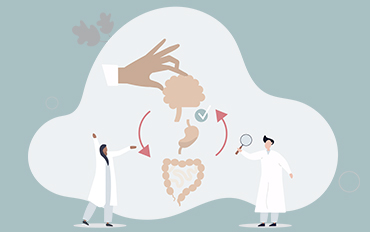
As fellow humans subject to mental health conditions ourselves, career and workplace challenges are areas that I trust we can universally agree we share with our clients.
COVID-19 made this particularly poignant as most of us were impacted in parallel ways to our client population—some of you might have been employed at institutions where you functioned as first responders; some might have been laid off or put on furlough; and many of you in private practice and even in agency settings had to make the dramatic and abrupt shift to telehealth. I underwent two of these sudden and stressful work-related experiences—the halt of in-person training I was conducting throughout the US (furloughed in essence)—and converting my practice to telehealth. There was only one other time in my life where I was both therapist and “the affected” during a natural disaster, when I experienced Hurricane Andrew in 1992. During the pandemic. I was so grateful that AAMFT nimbly developed and offered a variety of resources to cope with the disruption and social isolation of the pandemic such as virtual support groups; the At Home webinars, free learning series from experts in our field dealing with COVID-19; and the latest information on telehealth and the regulatory exceptions being made across state lines. I am sure many of you, like myself, availed yourselves of these benefits and resources.
The pandemic was on a scale not known to humankind in a century—and we will no doubt be studying the aftermath and its consequences for decades to come. I am pleased that this issue of the FTM will explore the challenges that we as working healers face, but also that of the clients, families, and communities we treat.
During the throes of the pandemic, AAMFT embarked on the MFT Workforce Study (WFS) which was published in 2022. This was an unparalleled opportunity for gathering information to forecast MFT workforce trends, but also to capture the effects of the pandemic on MFTs work settings, and predict areas of concern and need, not just for systemic therapists, but future MFTs in the profession.
The results of the WFS give us a peek into areas of potential distress and challenge for practitioners. As a result of the pandemic, respondents to the survey indicated that they experienced a 64% increase in demand for their services, with 34% noting an increase in work hours. Many stated they were at “maximum capacity.” This increase was facilitated by the shift to providing services virtually due to the health restrictions closing in-person services, with 47% of respondents saying they were primarily or exclusively seeing patients through telehealth (only 4% reported using telehealth in a 2020 survey); and 96% indicated they intended to continue services via telehealth in some capacity.
While continuing to see clients in person and via telehealth provides increased flexibility for practitioners, it also potentially incurs increased business expenses from the costs required to maintain both venues. Providing telehealth requires practitioners to keep up with the ethical implications, best practices training associated with providing online therapy, evolving changes in technology, and constant changes to legal requirements internationally, nationally, and locally. The increased demand for mental health services, coupled with the increased demand for clinicians to adapt quickly to client needs presents a stressful environment for MFTs moving forward. This was reflected in the WFS, with 63% of respondents indicating that demand for their services has grown since the pandemic, but over one-third (35%) of respondents reporting that “burnout/managing a high client caseload was one of the top challenges facing the profession over the coming years.” While it is great to see more people seeking providers to address mental health issues, it highlights a need to support MFTs experiencing burnout with resources and the need to reduce barriers to moving MFTs into the workforce, as AAMFT is doing with portability and AccessMFTs .
In contrast to the challenges and stresses reported by the respondents of the WFS survey, there is an indication that the MFT profession is experiencing an increase in attractiveness in working in the mental health discipline, with 84% of respondents being favorable to recommending a career in MFT to college students. Another finding from the survey that reflects this increase in desirability for the profession is that more early career respondents reported beginning their MFT studies immediately after their undergraduate work. This trend is certainly promising for the profession’s future as the youngest and smallest mental health discipline. To support this trend, AAMFT will soon launch a new docuseries, Jobs of Tomorrow. This series will highlight the important work of systemic therapists from different perspectives and will be used to promote our profession to undergraduates and high school students to develop a strong pipeline to the MFT profession.
Perhaps, like no other time, clinicians and clients shared so much overlap in loss, life challenges, and areas of adjustment. We have navigated new boundaries working at home and increased screen time and its effects on communication and intimacy, formed communities of learning and training, learned to work collaboratively online and watched the world embrace mental health for supporting ourselves and our communities in ongoing stressful conditions for years. This systemic phenomenon that we share with our clients for how we work, love, and learn will have long-term effects that we are entrusted to be on the leading edge of in our practice, ethics, and research. MFTs, as systems thinkers and practitioners, are particularly equipped to assist clients and lead in research and public policy around workplace-related stress and dysfunction.
On behalf of the AAMFT Board of Directors, I applaud the authors and contributors of this issue for their work in addressing workplace issues and challenges and thank our members and MFTs for your leadership in navigating the seismic shifts that have occurred in the various interlocking systems of our lives and worlds.


